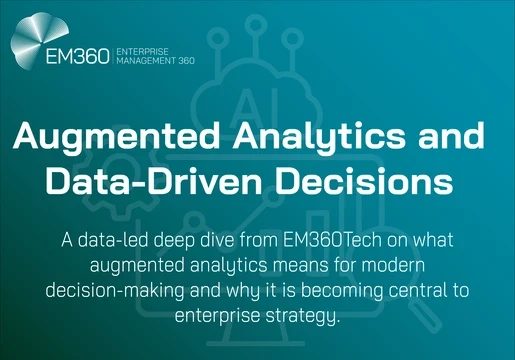There is an old saying that there are no perfect solutions, only trade-offs. We have all experienced this trade-off situation in our lives at some point, when we must make a decision knowing that there is no perfect solution available and that we will be forced to compromise in some way.

This is one of the reasons why some people choose to put money in the stock market, they’re prepared to take a risk, while some people prefer to put money in savings accounts, where the payback is more predictable. The trade-off in this example is that you cannot put the same money in both places at the same time. You need to make your decision based on the existing trade-off of higher risk and return (stocks) or lower risk and return (savings account).
This is just one example, but there are trade-off examples in nearly every aspect of life — including technology. Years ago, when cloud computing was first available, IT managers had to make major decisions on trade-offs in choosing to purchase new resources in the data centre or in the cloud. And the trade-offs in this situation were many. A few examples:
- On-premises and off-premises? (Own and manage a data centre or not)
- How to pay for IT resources? (CAPEX versus OPEX)
- Who would manage IT? (customer versus provider)
- Performance and security (will it meet the customer need off-premises?)
Obviously, at the time, customers had to make some big decisions about IT before they were up and running. Since there was no complete solution available, we made decisions that seemed to fit our needs best.
Today, cloud has matured to the point where there are very few trade-offs compared to the traditional on-premises data centre. High performance and availability, security and compliance, visibility and control are all now possible in the cloud.
But as more customers adopt cloud and their needs evolve, many organisations are now starting to realise that a new layer of trade-offs has arisen. Customers now need capabilities that are available in the cloud services industry in general but may not be offered by any one vendor.
So, even with the evolution of cloud, are we back to making trade-offs?
The answer is yes, but the trade-offs are different. Today they reflect:
- Cost savings– Do you want an efficient solution? There are many differences among providers as it relates to cloud pricing – even when advertised as “consumption-based”.
- Migration– Do you have the skills/resources to move data to the cloud? Time to cloud (time to value) is an important metric in most cloud projects. Doing it yourself can significantly extend the project timeline and risk.
- Management– How much of your cloud do you want to manage? Storage? Compute? Hypervisor? Security?
- Supporting services– Do you need backup? Do you need support?
The bottom line is that customers need to be ready to ask the right questions early to avoid trade-offs later. Even with cloud.
We recently released a new whitepaper called Ten Topics to Discuss with Your Cloud Provider. The goal of the paper is self-explanatory, but as a sneak preview to what is included in the paper, consider this short section on application performance considerations:
Can the provider align my application performance requirements with my cost expectations? Over-provisioning resources to ensure performance needs are met comes with a cost. At the same time, under-provisioning performance to meet cost objectives can lead to missed expectations for the application. Does the vendor provide flexibility in terms of performance to cost? Can the provider offer a mix of public, private, and bare metal for different performance requirements? How flexible is the provider in offering workload mobility between performance tiers? Can they be managed together? Can the vendor scale performance and capacity independently AND bill based on the consumption? Or do they bill based on fixed allocations? Ideally, the provider allocates resources as needed, over-allocates where necessary, but charges only when the resources are used.
As with any IT, it often comes down to meeting the organisation’s expectations and application requirements. All companies and applications are unique but starting with a common framework to engage with multiple providers during due diligence will help focus in on what matters most and help to identify which providers are best suited to meet your needs.
Without a doubt we have witnessed an upsurge in cloud in recent years as it has become more mainstream and recent events (i.e. COVID-19) have simply accelerated this. In fact, I would go as far as saying that businesses are now at the stage where their choice of cloud computing models is vital to their long-term sustainability and profitability. What the pandemic has brought into sharp relief is how a flexible cloud deployment is critical to enable enterprises to be agile and adaptable with their workloads, processes, and the support they can give to remote workforces. And as organisations start to make their first tentative steps back to office working so this will be combined with more remote and flexible working which means cloud will become even more important. Therefore, post pandemic, make sure that you have considered all the trade-offs as you continue your cloud journey.







Comments ( 0 )